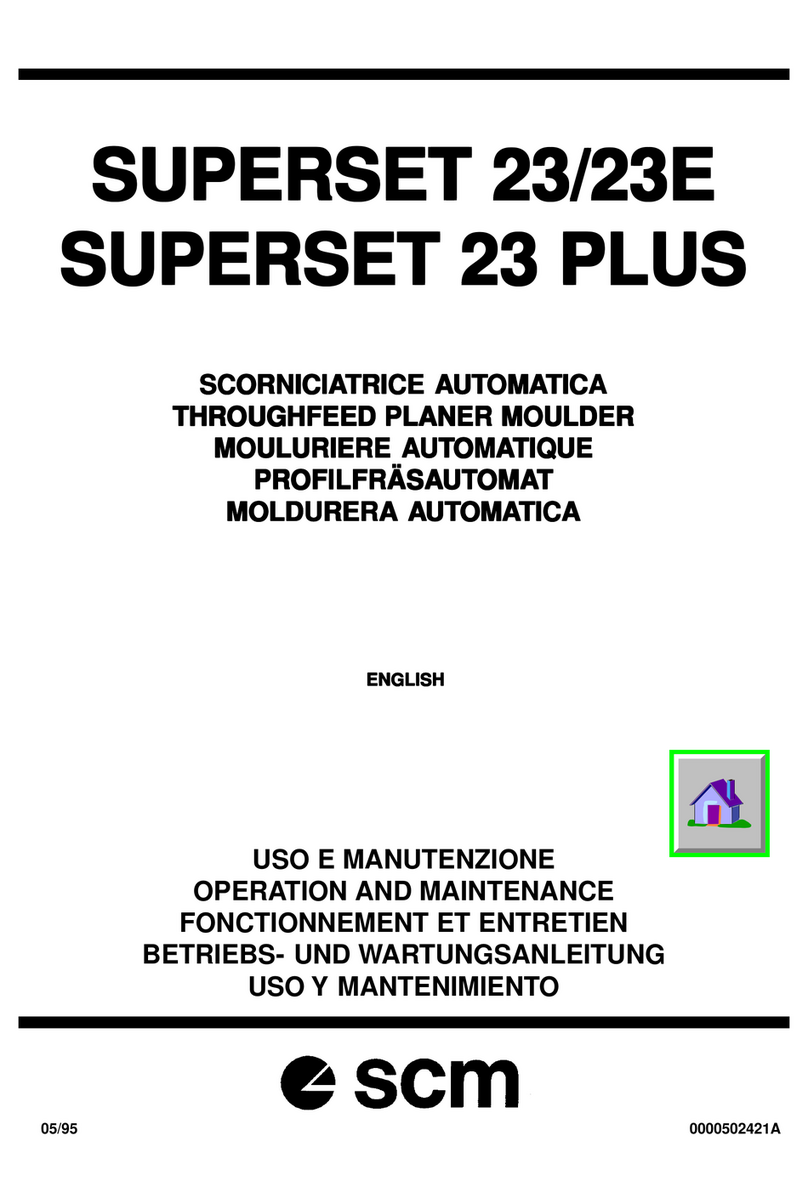
- 5 -
1.
INFORMAZIONI GENERALI • GENERAL INFORMATION
ENGLISHITALIANO
Carefully consult this manual
before doing any adjustment or
maintenance services.
1.1. PURPOSE OF THIS
MANUAL
This manual has been drawn up
by the manufacturer and is en-
closed with the machine(1).
The information contained is in-
tended for skilled operators(2).
This manual defines the purpose
for which the machine has been
manufactured and contains all the
necessary information for safe,
correct use.
Constant observance of the
instructions contained in this
manual increases the level of
safety of the operator and the
machine, guaranteeing a longer
operating life.
To facilitate its reading, it has been
divided into sections pointing out
the most important operations. For
a quick research of the topics, it is
recommended to consult the index.
To better stress the importance of
some basic passages, they have
been written in heavy type and
marked by some preceding
symbols:
Indicates
imminent risks which may cause
serious injury to the operator or
other persons. Be careful and
scrupulously follow the
instructions.
A statement
advising of the need to take care
lest serious consequences result
in harm to material items such as
the asset or the product.
(1) La definizione macchina, sostituisce la deno-
minazione commerciale a cui fa riferimento il
manuale in oggetto (vedi copertina).
(2) Sono le persone in possesso di esperienza,
preparazione tecnica, conoscenza normativa e
legislativa, in grado di svolgere le attività neces-
sarie ed in grado di riconoscere ed evitare pos-
sibili pericoli nell'eseguire la movimentazione,
l'installazione, l'uso e la manutenzione della mac-
china.
(1) The word “machine” replaces the commercial
denomination which this manual refers to (see
the cover).
(2) Only experienced people having the proper
technical ability and knowledge of the regulations
and laws will be able to carry out the necessary
operations and to identify and avoid possible
damages during handling, installation, operation
and maintenance of the machine.
Consultare attentamente questo
manuale prima di procedere a
qualsiasi intervento sulla
macchina.
1.1. SCOPO DEL MANUALE
Questo manuale è stato redatto
dal Costruttore e costituisce parte
integrante del corredo della mac-
china(1).
Le informazioni contenute sono di-
rette a personale qualificato(2).
Il manuale definisce lo scopo per
cui la macchina è stata costruita e
contiene tutte le informazioni ne-
cessarie per garantirne un uso si-
curo e corretto.
La costante osservanza delle in-
dicazioni in esso contenute au-
menta il livello di sicurezza
dell’uomo e della macchina, ga-
rantendo una più lunga durata di
funzionamento della macchina
stessa.
Per facilitarne la consultazione,
esso è stato suddiviso in sezioni
che ne identificano i concetti prin-
cipali; per una ricerca rapida degli
argomenti consultare l'indice de-
scrittivo.
I testi da non trascurare, sono sta-
ti evidenziati in grassetto e prece-
duti da simboli quì di seguito
illustrati e definiti.
Indica pe-
ricoli imminenti che potrebbero
provocare gravi lesioni all'opera-
tore o ad altre persone; è neces-
sario prestare attenzione e seguire
scrupolosamente le indicazioni.
Indica che è
nesessario prestare attenzione al
fine di non incorrere in serie con-
seguenze che potrebbero portare
al danneggiamento di beni mate-
riali, quali le risorse o il prodotto.




























